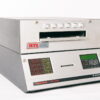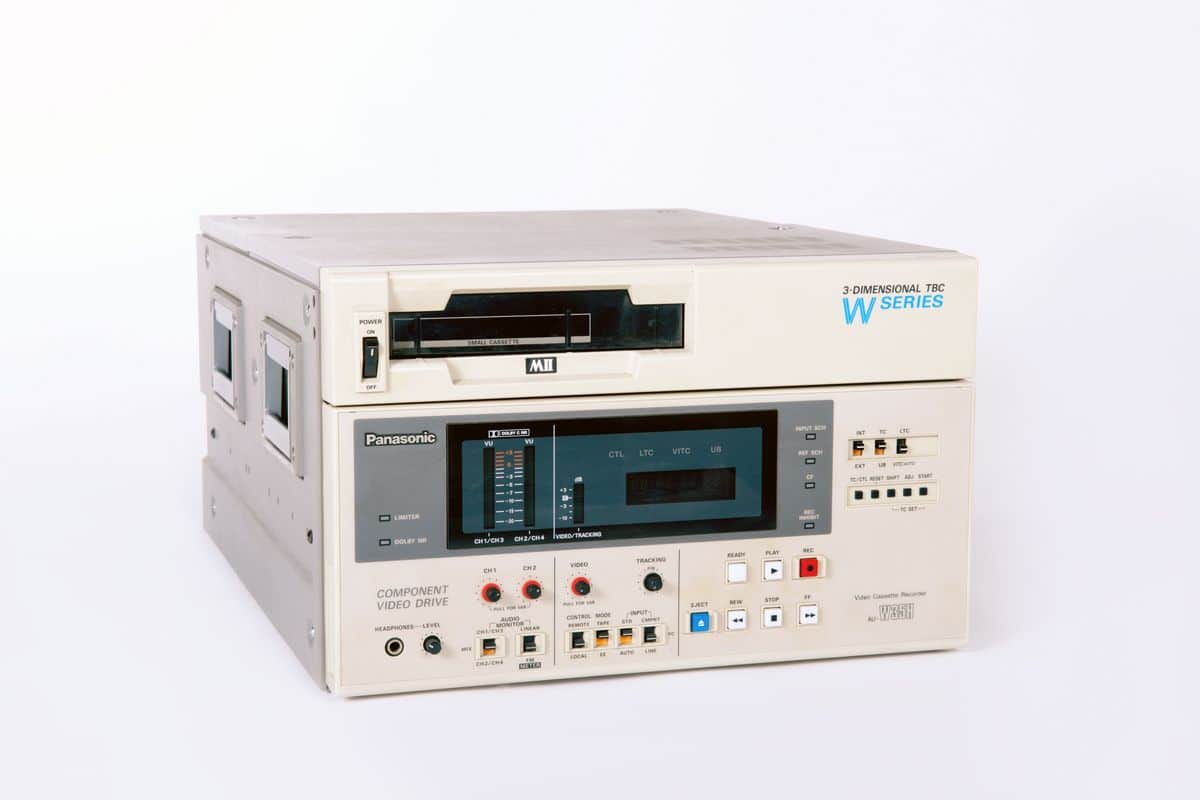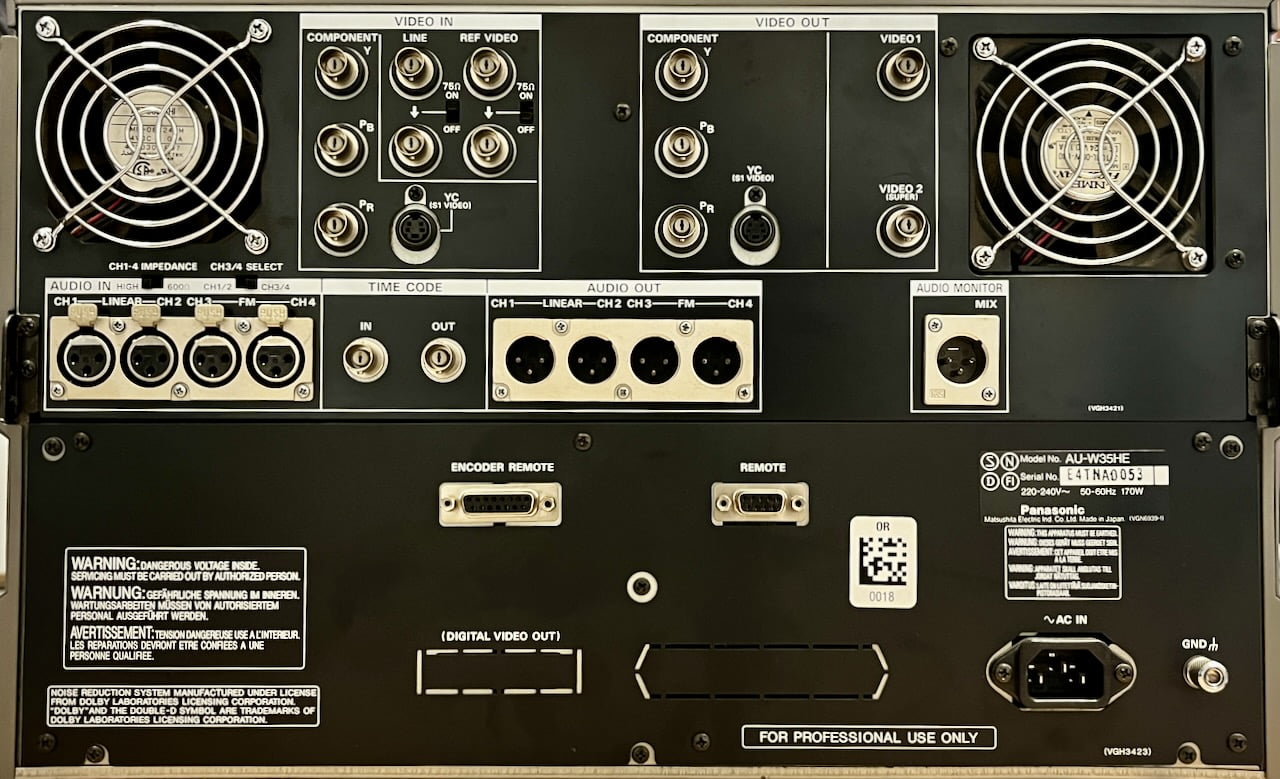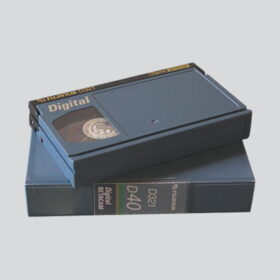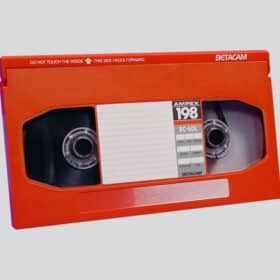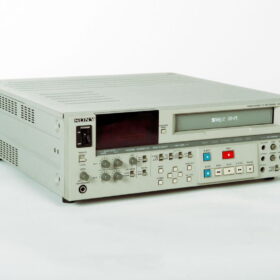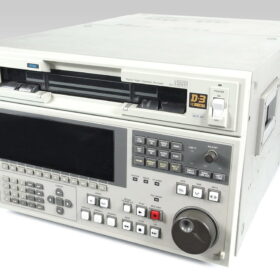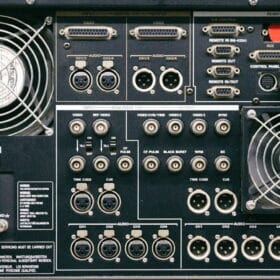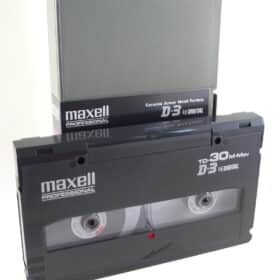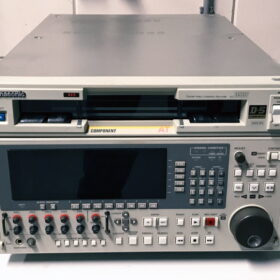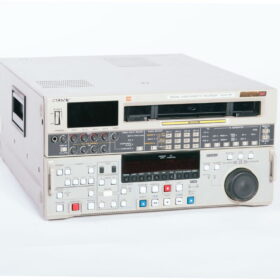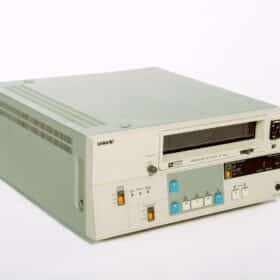The Panasonic AU-W33H is a professional-grade MII video recorder designed in the 1980s to compete with SONY’s Betacam SP format. While MII offered several technical advantages, it never achieved mainstream success. Today, machines like the AU-W33H remain essential tools for archivists working to preserve this rare and often problematic format.
Why MII failed – A brief history
Panasonic introduced the MII system with high hopes. It provided better picture quality than U-matic, more compact cassette design, and PCM digital audio. However, it entered a market already dominated by SONY. Betacam SP had widespread support in broadcasting, and most facilities had already built their infrastructure around it.
As a result, MII adoption remained limited. Broadcasters were reluctant to invest in a new ecosystem with little third-party support, especially one seen as less stable over time. Consequently, many MII tapes today are in poor condition and urgently need digitisation.
Reproducing MII tapes with the AU-W33H
Despite the format’s challenges, the Panasonic AU-W33H MII offers one of the most reliable playback options for NTSC MII tapes. Its robust transport mechanism, PCM audio support, and internal TBC make it a practical choice for recovering legacy footage.
If your archive includes MII cassettes, we strongly recommend digitising them without delay. The format is not only unstable – the upper drum assembly in M2 machines typically lasts around 1,000 hours before the video tips wear out, resulting in playback errors or signal degradation. Replacement parts, such as new drum assy’s are extremely rare. Delaying digitisation increases the risk of both equipment failure and permanent signal loss from deteriorating media.
Conclusion
Despite its technical merits, the MII format is now largely a historical footnote in the evolution of professional video recording. Its limited adoption and the rapid advancement of digital video technologies meant that it did not leave a lasting impact on the industry.

